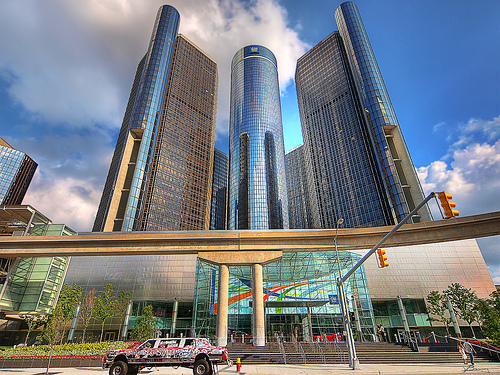Why Should you Market to Millennials?
If you are asking yourself why should I care about the millennial generation and why should I consider spending my marketing budget, time, and effort targeting millennials.
I have the answers for you….
The millennial generation represents the largest generation consisting of approximately 80 million people with over $170 billion in purchasing power.
The millennial generation with its large influence is shaping the way that brands send messages, forcing businesses to change or suffer the consequences.
Millennials marketing and an understanding of how to reach the millennial generation is critical and will enhance your organization’s brand and integrated marketing communications strategies. Implementing these millennial elements will help your organization reach its business and marketing objectives.
Millennial Characteristics
Let’s start out by giving the definition of millennials. The millennial generation is typically defined as individuals born between 1980 and 2000.
A comprehensive understanding of millennial characteristics is critical in creating an integrated marketing communications (IMC) plan.

There are concepts, values, and characteristics unique to all millennials that include:
Concepts
- The use of a variety of media
- They view brands as a partnership and form of self-expression
Values
- Honesty
- Authenticity
- Value
Characteristics
- More technologically advanced than previous generations
- More educated than previous generations
- The most racially and ethnically diverse
The importance of millennials cannot be underestimated because they offer significant brand loyalty to brands and products of preference. Another critical element includes the fact Millennials take action on behalf of brands based on loyalty. In addition, the millennial generation likes music and events and requires authenticity, two-way communication, social responsibility, and connection with a personal touch.
Other important concepts of millennials marketing involve the millennial generation’s value systems that include altruism and a predisposition to support social and environmental causes they care about. As a result, millennials purchase and support companies with environmentally and socially responsible products (brands).
Millennials Marketing Strategy and Tactics
A two-pronged generic millennial strategy and a subculture marketing strategy are critical to an organization seeking to achieve its objectives. Using a homogeneous millennial culture and subculture marketing strategy based on addressing the different ethnic subcultures provide a method to reach the target audience effectively.
The combination of the two marketing strategies will be used in the areas including logo design usage (affect), events, social and digital media, television, radio, and sponsorship (cognition).
The other elements included in marketing to millennials should also consider product or service content options and pricing (environment).
A combination of promotional strategies is required when marketing to millennials. Think in terms of the sum of the parts when influencing the millennial.
The marketing mix (product, place, promotion, and price) also heavily influences the millennial consumer stimulating trial and creating brand loyalty based on leveraging the brand assets.
Marketers are challenged with addressing two diametrically opposite considerations to reach millennials effectively. On one hand, millennials communicate asynchronously (i.e., via text). Conversely, the millennial market segment wants face-to-face interactions and a personal touch.
The key takeaway is for marketers to address the millennial generation using an IMC approach.
Market Research Drives Strategy and Tactics
Market research was the most important step in the approach used by Mercedes-Benz and Amazon. The essential driving force behind the development and launch of the CLA from Mercedes-Benz and the Fire TV from Amazon is market research.
Market research was the basis that determined product development and the corresponding marketing strategy and tactics resulting in both organizations reaching and exceeding organizational objectives.
The list included is not an exhaustive list of marketing elements used in strategy and tactical development, but a representation of the most important and how they fit together to address a diverse generation. The elements listed provide an organization with a framework from an IMC perspective to take into consideration when forming strategies and tactics to reach the millennial consumer.
Event Marketing
 IMC messaging strategies with a millennial target audience must use a dual approach. The IMC strategy must incorporate event or experiential marketing offering a personal one-to-one relationship required by the millennial generation based on the statistic that 78% of millennials prefer a brand experience that is relevant and gives them information.
IMC messaging strategies with a millennial target audience must use a dual approach. The IMC strategy must incorporate event or experiential marketing offering a personal one-to-one relationship required by the millennial generation based on the statistic that 78% of millennials prefer a brand experience that is relevant and gives them information.
An example of a relevant and simple marketing tactic to reach this audience is Federal Express providing South by Southwest festival attendees charging stations to charge mobile devices. The charging station example demonstrates a marketing tactic that builds an emotional connection with a brand, especially with the millennial generation that does not like to be without the use of its mobile devices.
Digital and Social Media
Another critical element in an IMC strategy focused on millennials requires a company to use Internet marketing and social media which is in stark contrast to the face-to-face interaction desired by this generation. Event marketing provides the ability to begin a conversation with the millennial consumer supported by the internet and social media.
The internet and social media allow a company to continue to engage this generation to gain brand awareness, stimulate trial usage, repeat usage, and ultimately brand loyalty. The social media channel must consider the product or service offered by the company and target where this generation spends most of its social media time (Facebook, Twitter, YouTube, Pinterest, Instagram, Snapchat).
For example, using Facebook and Twitter to engage craft beer consumers would be a good social media choice and LinkedIn would be a poor media choice. Training consulting services or customer relationship software provides examples of a product and service that offer a better fit with LinkedIn’s target audience and purpose.
Millennials are early adopters of different social media channels, and marketers must keep track of the social media consumption patterns and trends adapting marketing tactics to reach this generation.
Loyalty and Reward Programs
Millennials are also forcing brands to become more participative by subtly engaging by offering loyalty and reward programs. 77% of the millennial generation reported participating in loyalty and reward programs.
In addition, 78% of millennials reported to being more likely to buy from a brand with a rewards program than one without.
Millennials have the highest percentage of word-of-mouth marketing, electing to share feedback about a product or service both on-line and off-line. The implications of these millennial statistics support the social media tactic of engaging using online channels to support the event marketing high-touch required by this generation.
Corporate Social Responsibility (CSR)
A critical statistic for marketers is the fact 75% of millennials donate to charity and 60% volunteer for a worthy cause.
The millennial generation coming of age is one of the most important components influencing marketing and the messages brands send. The millennial generation with its demonstration of purchasing power and brand support for companies that are environmentally conscious has caused a seismic shift in business.
Here is a quote from Simon Sinek that provides a paradigm shift for marketers and how they communicate:
Companies must infuse environmentally responsible practices into the core of their business strategy using an IMC approach. As a result, marketing strategy provides a core element in business strategy to promote a company as an ethical entity with genuine concern for social issues and the environment. Marketers must create authentic messages that can be supported with actions regarding the environment and social issues or risk suffering the consequences of the millennial consumer.
CSR Examples from the Automotive Industry
 Photo by paul bica
Photo by paul bica  Companies such as General Motors and Ford have had to change significantly over the last six years. It is not enough to provide vehicles that are environmentally conscious, but the millennial generation demands a more significant effort from a brand. GM and Ford have implemented programs across their entire supply chain supporting environmental and social initiatives. GM and Ford now use a sustainability report a common marketing tool in business to provide information regarding the environmental and social practices of the company.
Companies such as General Motors and Ford have had to change significantly over the last six years. It is not enough to provide vehicles that are environmentally conscious, but the millennial generation demands a more significant effort from a brand. GM and Ford have implemented programs across their entire supply chain supporting environmental and social initiatives. GM and Ford now use a sustainability report a common marketing tool in business to provide information regarding the environmental and social practices of the company.
The sustainability report used by many companies across all industries provides evidence of the changing nature of business and marketing influenced by the millennial generation. However, if companies do not provide the millennial generation with authentic evidence of support for the environment, they could face significant brand and company damage.
The key takeaway is to include corporate social responsibility into your business and marketing strategy in an authentic manner.
Benchmarks for Millennial Marketing
There are a few companies out there that I think are really getting it right and setting the bar for marketing. The companies that are in the best position to take advantage of the largest generation include:
- TOMS
- NETFLIX
- UBER
- DOLLAR SHAVE CLUB
TOMS donates a pair of shoes to someone for every pair of shoes sold. Giving and aligning the millennial generation with a cause allowing them to participate in the story. Blake Mycoskie, the founder, has found a way for philanthropy and profit to coexist in perfect harmony.
Netflix continuously keeps pulse with the millennial generation exceptionally well and uses social media with shareable content to attract and engage.
Uber with its unique app focused on convenience and the needs and wants of the millennial generation. Uber provided a disruptive business model that was unique and customer-centric targeting millennials with marketing campaigns including highly shareable social media content.
Dollar Shave Club has disrupted the personal grooming market with a business model that is uniquely suited to millennials. The two critical things marketers can takeaway from Dollar Shave Club is their unique, disruptive pricing model and creative marketing. Dollar Shave uses multiple media explicitly targeting millennials with relevant, shareable, and entertaining content.
Conclusion
The focus of this post is dedicated to targeting millennials using an integrated marketing communications (IMC) framework. In other posts, I discuss brand building that must take place before developing the IMC plan.
The millennial generation is an important generation for marketers to target for almost every industry. Forming strategies and tactics to reach the millennial consumer based on solid market research provides the best opportunity to target them effectively and achieve success.



Jose Satterwhite
Hey there I just wanted to say that this was a Informative post, just what I was looking for.
Stephen Zoeller
Jose, thank you for the kind words. I’m glad you found this helpful.
Mitchell Cushenberry
Hey there I just wanted to say that this was a Useful article, just what I was looking for.
Stephen Zoeller
Mitchell I’m glad my post was useful. Please continue to check out my blog. Are there any particular subjects you are interested in reading?
The Jewelry Store
Cool article, It was practical.
Stephen Zoeller
I really appreciate your kind words and I’m glad you found the article practical. Thank you for commenting and please let me know any content you would like covered in the future.
Please subscribe to my blog at https://www.stephenzoeller.com and it will alert you when I have made new posts.
Also, you can follow me on:
Twitter at @stepzoellermktg
Pinterest at https://www.pinterest.com/stephenzoeller/